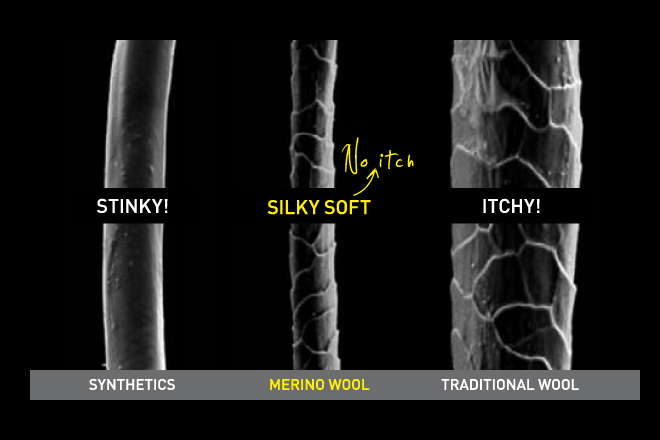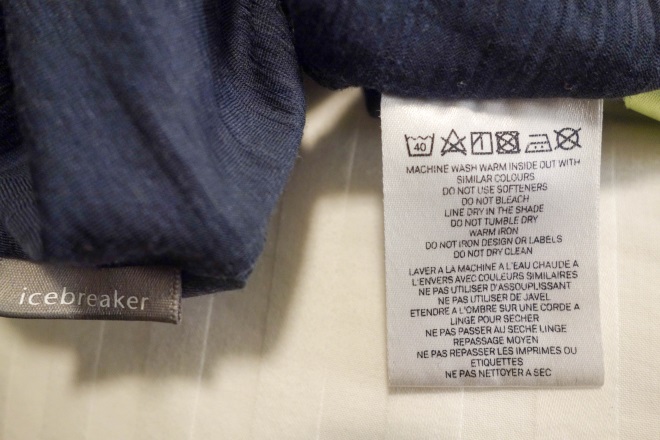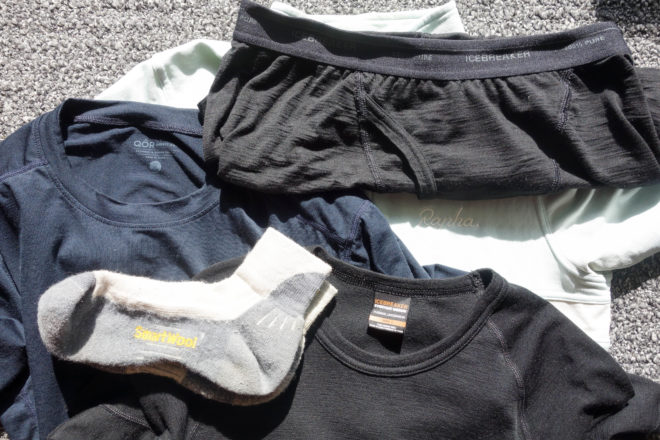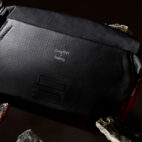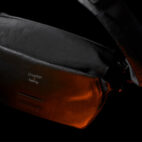Why Choose Merino Wool for Travel?
For years, travel clothing has been a second thought. Travelers packed for the weather or events but rarely to maximize comfort or minimize odors or weight. That changed about 20 years ago when travel-specific clothing brands started sprouting up. Who doesn’t have a friend who swore by Royal Robbins for their trips through Europe or SE Asia? These brands promoted olive drab travel pants with a dozen cargo pockets and built-in belts. Unfortunately, they looked great for hiking a jungle tour but not much else.
Then, travelers saw the light. The textile gods extolled the virtues of merino wool. Could a natural fiber beat laboratory-born inventions like nylon and polyester? And at a price point of some $60 just for a t-shirt, is it worth paying this high price of admission to enter Merino Club? Let’s get stuck into the details.
What Is Merino Wool?
Merino wool, like all wool, comes from sheep, except these sheep are special. They’re called Merino Sheep (surprise!), and live in New Zealand and Australia. Merino is special because it’s very fine and soft, so it doesn’t give you the itch or scratchiness that some other harsher fabrics (including non-Merino wool) give. There are many grades of merino based on its fineness but even the coarsest iteration is under 24 microns. A human hair is about twice that, so you can picture how fine these threads are.
Why Is It Perfect For Travel?
Let’s first talk about the main attributes of Merino, and it should become clear why it’s great to travel with.
Fine
Merino wool is fine. This doesn’t mean it’s ‘just okay’. It’s referring to the softness of the wool. It is very soft. The way it sits on your body is natural and flowy. It conforms to your curves; it’s not stiff. Its elasticity helps with this but also helps it retain its shape and it is able to bounce back after being stretched or crumpled up. Depending on how fine the grade of Merino is, and how it’s blended, it can feel very close to silk. So it’s very comfy to wear and not as prone to wrinkling.
Handles Moisture
Merino can handle moisture very well. It can absorb a large amount (30%) of its weight in water, but still feel dry. The surface has a waxy coating (lanolin) that repels water. It’s a great insulator to keep your body warm and it wicks water and this evaporation process creates a cooling effect.
“When traveling with Merino you can afford to pack less because you’re getting more wears…”
Temperature Regulation
Directly correlated to how it handles moisture, Merino has a natural ability to regulate temperature. Wear it on your pre-dawn ride and it’ll keep you warm but not hot. Then wear it again on your mid-afternoon hike and it’ll keep things cool and dry, even when the sun is beating down. Throw it under a layer, and it’s great insulation too.
Odor Resistant
This can be controversial depending on who you talk to, but Merino has always been touted as being naturally odor resistant and/or antimicrobial. From personal use, I’ve never had a piece of Merino clothing (including socks and underwear) smell, even after 2-3 uses on a trip.
What does all of the above equate to?
When traveling with Merino you can afford to pack less because you’re getting more wears. And you’ll spend less time at the sink or laundromat and more time traveling and having adventures. It makes sense, right?
How Do You Take Care of Merino?
Cleaning your Merino Wool does not take much extra effort. I like putting my technical/wool clothing aside and doing a special laundry load for them. Wash it with warm or cold water, with similar items. Turn the clothes inside-out if you have time and use regular detergent and avoid fabric softener, bleach, or any additives. When on the road, hand washing in a sink is the way to go. And for maximum lifespan, always hang it up to dry.
“Merino has always been touted as being naturally odor resistant and/or antimicrobial.”
Why Is Merino So Expensive?
Merino is a natural product that depends on a living animal – alpine sheep. There are a variety of factors that lead to the great expense of Merino. First, it takes six months to grow a summer coat, and another six months to grow a winter coat for the sheep. You can’t speed this up. You can grow more sheep, though, but there are a lot of factors here like increased labor, land, feed, etc. requirements. Since Merino is so fine (see above), it takes a lot more of it to produce a garment. Merino often comes from ethical farms which may or may not be important to you, but it does add to the cost of the fabric.
Merino vs The Competition
How does Merino compare to the competition? When it comes to cost, Merino is one of the more expensive fabrics you can buy, so let’s just get that out of the way first. In terms of performance, it holds its own really well.
Cotton
Cotton is cheap and more durable than Merino but is less comfortable, does not hold its shape well, absorbs odors, and is rougher than Merino. Compared to lambswool (aka normal wool), Merino is not as warm but it is finer and less itchy.
Cashmere
Cashmere is a great competitor to Merino wool but they serve very different markets. Cashmere has many of the same positive qualities as Merino except it is more fragile and considered more rare and luxurious. In other words, it’s a material you might find on a designer scarf or fancy sweater. Merino requires some care but you do not need to baby it.
Synthetics
Finally, synthetics are great at moving moisture away from your body and can be made to be quite soft (almost like silk). However, they are notorious for stinking and holding on to odors. Also, if you plan on going camping or being near a fire, synthetics catch on fire and burn hot, while the high water and nitrogen content of Merino makes it naturally fire retardant.
Who Makes Some Awesome Merino Travel Apparel?
Hopefully, you’re convinced of the wonders of Merino and want to add some items to your one-bag packing list. Here are some companies that are tried and tested that we can recommend.
Alchemy Equipment – Hailing from New Zealand, this company helmed by outdoor industry veterans makes some of our favorite bags. Their Merino collection includes really sharp looking, thoughtfully designed pieces.
Ibex – I would be remiss not to mention Ibex. Great cuts and designs; their base layers are wonderful.
Icebreaker – Even though some brands preceded it, Icebreaker must be given credit for really starting the Merino 2.0 movement. They paired incredible marketing with amazing products and are still mentioned today any time someone talks about Merino. I am particularly fond of their tees and boxers.
Nau – Not exclusively a Merino producer, this Portland brand uses Merino in some fun ways. My favorite is their Merino hoody.
Outlier – This niche brand out of Brooklyn is known for their incredibly versatile pants but their Merino t-shirt is a staple in many travelers’ packs.
QOR – Pronounced “core”, this company was founded and led by a veteran of the athleisure movement (don’t hate me for using that term!). They offer a wide variety of Merino wool tops ranging from ultralight base layers to hefty tops.
Rapha – Primarily a cycling lifestyle company out of the UK, Rapha offers everything from Merino jerseys to bibs, down to socks, to keep you comfortable on your century.
Smartwool – One of the legends of Merino, Smartwool is a proprietary treatment of Merino. Their socks are famous but check out their other offerings too.
Triple Aught Design – TAD has you covered for all your adventures whether it’s a hike in the local mountains or slogging through the jungles in a foreign land. Their apparel uses a variety of materials and blends, depending on the intended use, but their merino pieces in particular are world-class performers.
Unbound – Come here for the basics – tees, socks, boxers.
Wool&Prince – For the discerning traveler who needs to mix the outdoors with a business dinner, Wool & Prince has you covered.
Wooly – This brand from Seattle offers a surprisingly diverse number of cuts, ranging from the v-neck to even Merino tank tops.
Found the above article handy? You might also enjoy these:
Best One Bag Travel Ultralight Gear & Packing List
Packing List :: My One-Week Work Trip
Everything You Need to Travel the World in One Backpack
*Feature image via Joshua Earle.





 Carry Awards
Carry Awards Insights
Insights Liking
Liking Projects
Projects Interviews
Interviews


